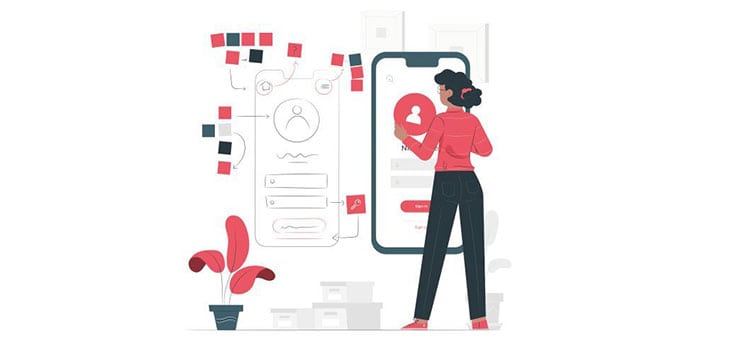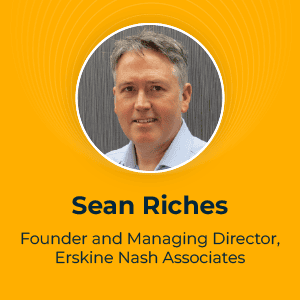
In this third and final instalment of our series looking at the ideal innovation cycle, we turn our attention to the pilot and subsequent launch of your digital product or service.
Earlier phases will have included one or more proofs of concept, to demonstrate the technical and commercial viability of your idea. These will have been followed by prototypes, to shape how the final product will actually work. Once you’ve refined these prototype designs to a point you’re happy with, the next stage will be a pilot. This is a stepping stone to your full launch of a minimum viable product (MVP) or service.
How a pilot differs from a prototype: Time to start coding
One of the key differences between your prototypes and your pilot is the way they’re built. Prototypes are typically created with dedicated prototyping tools that enable you to quickly test the user experience of your product. They’re not intended to be production-ready, meaning they won’t offer the levels of performance, security and stability you’ll require from the service you launch publicly. Your pilot, on the other hand, must deliver all of these things and more. And that means it needs to be properly coded, based on the designs produced during prototyping.
In the first instance, focus on coding the core elements needed to provide value to your users and organisation when you launch. Other capabilities can follow in subsequent iterations – just make your pilot is built with this future expansion in mind.
Why run a pilot?
A pilot gets your core digital product or service out in the wild in a controlled way, such that any issues don’t result in significant damage to the product or your organisation. The aim is to get your product or service to a point where it’s fit for a full launch, and the process could last anything from a few weeks to several months.
For UK public sector projects, the private beta stage is effectively a pilot.
What makes for a successful pilot?
Test with a genuinely representative sample of your final user base
Your proof of concept and prototyping will have included a lot of user testing, but with a carefully curated group of people. The pilot significantly broadens this, ideally to be representative of your final user base. One technique is to launch the service in a limited geographical area.
Test both the digital product and the wider business processes
As well as the digital product itself, you’ll be testing the business processes of which it’s part, as well as any integrations with other systems and services.
For example, if your digital service advises users to call a contact centre if they get stuck, is that contact centre ready to handle this? If you’re drawing on data from other systems, are they equipped to support the additional load?
Be clear it’s a pilot
You should expect issues to arise during a pilot. Make clear to your users that the product is still in a pre-launch testing phase and that you welcome feedback. As well as soliciting valuable input, this will increase user understanding if things don’t quite work the way they’d expected.
Keep listening, keep iterating
During the pilot, keep analysing qualitative and quantitative user feedback and making improvements based upon it.
How do you know when you’re ready for launch?
Through the pilot, ask yourself and your key stakeholders if you’re confident enough to launch the service more widely. If you were launching tomorrow, would you lie awake tonight worrying you’re about to face a flood of support requests and negative headlines, or would you sleep soundly?
Once your key people are in the latter camp, you’re probably ready for full launch.
Launching the minimum viable product (MVP) and iteration stages
This full launch should be what’s called a ‘minimum viable product’ (MVP) or ‘minimum viable service’. As we touched on above, you don’t need something all-singing, all-dancing yet. Instead, the MVP simply needs to be capable enough to deliver value to your users and, by extension, your organisation – perhaps in the form of revenues or cost savings.
You’ll then add functionality in stages, drawing on your vision for the product, user feedback and external influences, such as technology developments and competitor actions.
Launching a minimum viable product and then iterating is a highly cost-effective way to get to market fast and then build value in the right places.
What happens after launch?
Following the launch, your initial iterations will typically be quite rapid. This velocity generally slows over time, as you get closer to a point where the product is delivering its maximum possible value. At this stage, you’ll have a fully fledged product, which can be maintained in the usual ways. But even then, things can happen that demand a bigger shift in its capabilities, which could require another flurry of iterations, or even a mini-innovation-cycle of their own, involving a proof of concept and prototyping.
Accelerate your innovation journey
We hope this series of blogs has helped clarify what proofs of concept, prototypes, pilots and MVPs entail and give some guidance on how to run each stage successfully. If you’re currently nurturing an idea and want to see where you could take it, feel free to drop one of Softwire’s Design and Innovation team a line – we’d love to help.


